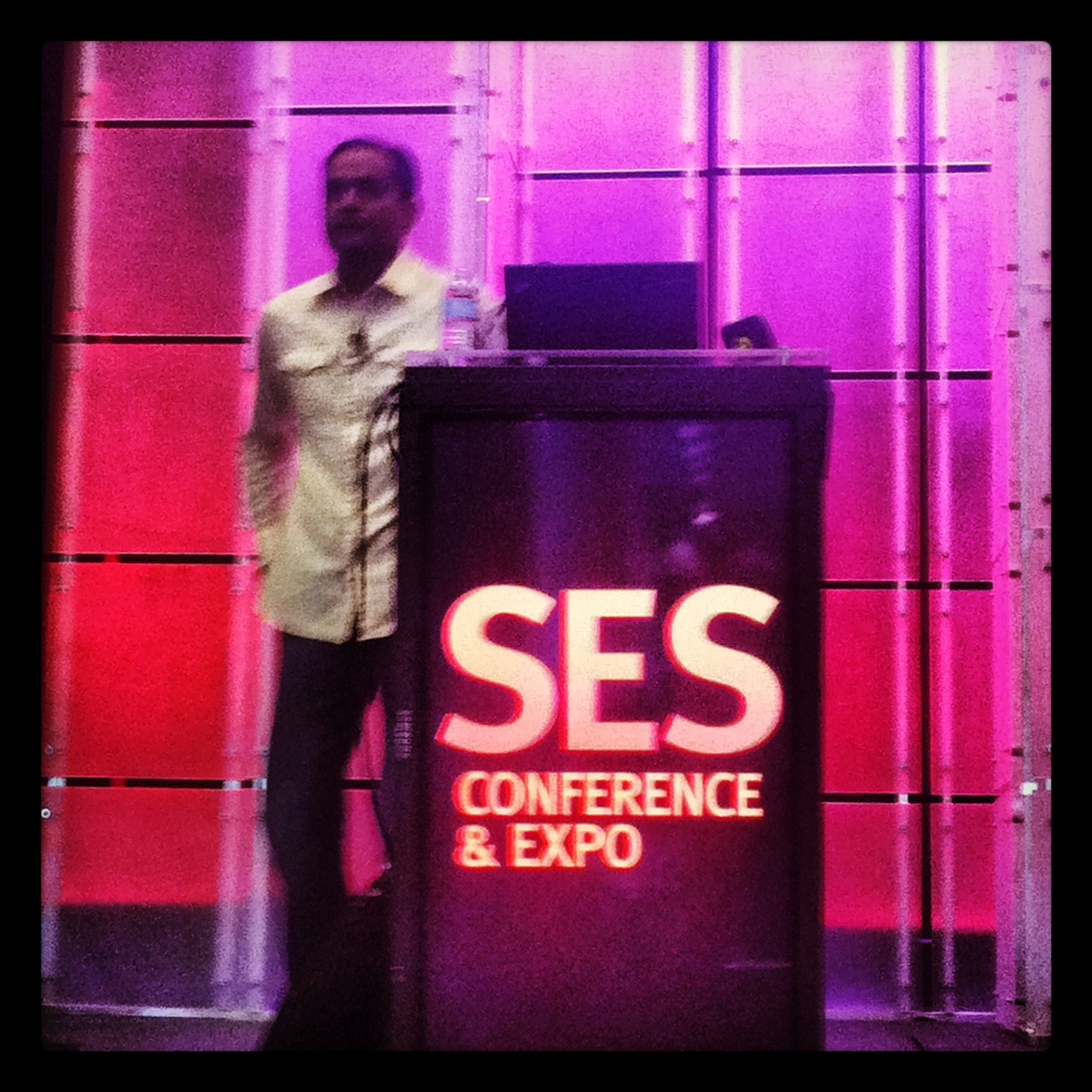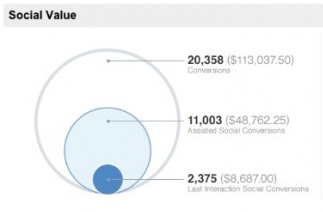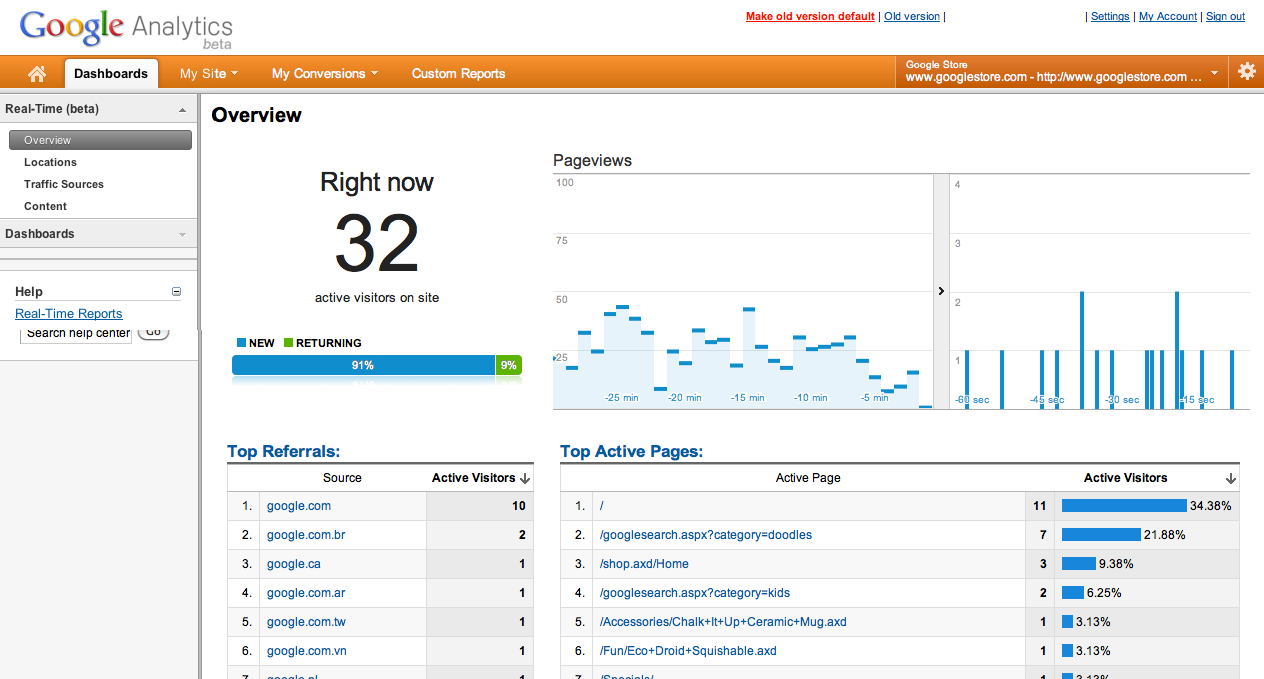 Marketers consistently cite better analytics and reporting as essential to achieving marketing goals, but in an age of data overload, it can be a challenge to know where to start. Avinash Kaushik, Google’s widely known analytics guru, delivered SES San Francisco’s day one keynote addressing the issue of acting on data to build business.
Marketers consistently cite better analytics and reporting as essential to achieving marketing goals, but in an age of data overload, it can be a challenge to know where to start. Avinash Kaushik, Google’s widely known analytics guru, delivered SES San Francisco’s day one keynote addressing the issue of acting on data to build business.
“The problem is today we report on stupid crap. We incentivize the wrong behavior,” he said.
Kaushik shared his three keys to online success, including insights on how to use data to optimize beyond conversions to win with web marketing.
The three main components of an effective web marketing campaign are:
1. Influence
Marketers have to engage and impact consumers of the world at the right moment, and target them when and how it matters most.
2. Experience
Websites should deliver a powerful digital experience. Kaushik went as far as to say, “If your website doesn’t deliver orgasms to people, it needs to change.”
3. Value
Campaigns have to give people what they want, and they should be optimized with an understanding of what brings long-term value to a business. If marketers don’t use data effectively to create these three things, marketing will fail.
Kaushik believes the most frequently overlooked aspect of a digital marketing campaign is value. Without value, it’s impossible to move the conversion needle. He said marketers take a myopic approach, optimizing for the 2 percent of web visitors who convert (on average).
He identified three key tenets to optimizing for 100 percent of a brand’s online audience, telling attendees, “If you do these things, you’ll be magnificent.”
1. Optimize for economic value, not revenue.
“Shift from focusing on revenue to focusing on economic value,” he said. Marketers should optimize for the overall economic value of acquisitions, not just the incoming revenue. This offers added insights on how audiences engage a company and can help marketers move “beyond the 2 percent.”
“[Conversions] are a lie. If you just measure conversions, you’re saying ‘I would like to be incompetent.'”
To optimize for economic value this, companies must stop looking exclusively at their conversion rates in analytics and start looking at the broader picture of which channels bring repeat visitors, what conversations are happening around a brand beyond the site and more.
The two strategic benefits of strategically shifting away from revenue optimization to economic value optimization are:
1. Making smarter dollar investments.
Building behavioral profiles of audiences helps marketers learn how to better invest dollars.
2. Making more money over time.
Measuring broader activity will help Identify the medium-term, near-term and long-term value.
By looking at more strategic results and making marketing decisions on adding value to all users, you effectively “stop saying, I’ll only accept one-night stands!” said Kaushik.
2. Optimize for multiple channels.
On a related note, it’s important not to get caught up in bottom-of-the-funnel marketing channels. For example, Kaushik cited the case of one company that identified brand searches as conversion drivers. They looked at brand queries in search as key to their conversions. But actually, roughly half of visitors who came in from various web channels on generic search terms converted – just not on their first visits.
There was immense value in optimizing content marketing campaigns for the broader terms, even if intiail investigations of conversion rates suggested otherwise.
He recommended Sunburst – an open source visualization service – as a tool that may help marketers understand their top of funnel conversions and valuable keywords.
Ultimately, when approaching multi-channel marketing (and attribution!) marketers must:
1. Hypothesize 2. Test 3. Be less wrong over time.
3. Understand the implications of a social web on traditional marketing.
A multi-channel approach will help brands win long-term value, but to effectively influence and offer the best possible experience to users, marketers must think of internet marketing as “intent marketing.” It’s essential to deliver the right message to the right person – and data can help identify which audiences respond to which campaigns.
“Marketing used to be about who could shout louder and more frequently. Now we’ve moved beyond that. Conversations go two ways.”
The social revolution has made marketing become social marketing, where building conversations is how to influence and win. If companies don’t understand this, they run the risk of becoming irrelevant or worse, obnoxious.
“There’s a reason Facebook doesn’t work for you – it’s NOT Facebook. It’s you.”
Social is not about direct conversions, so there must be other methods of measurement in place.
There are four signals of “intent marketing” success:
1. Conversation rate.
If a company broadcasts through social without interacting, it’s throwing money away. “Stop embarrassing yourself,” Kaushik said. It’s important to measure what people are talking about (and respond to them or miss conversion opportunities!).
2. Amplification rate.
This figure measures Retweets, forwards, Likes, etc, to identify the content marketing components that are working. This metric will help brands move from their “current reach” to “the reach they SHOULD be achieving.”
3. Applause rate.
This looks at the clicks that come back to your site. Like amplifaction rate, it can help guide content marketing campaigns that power social.
4. Economic value.
Kaushik clarified that marketers should be measuring how they make money off of social, even if the channel is not directed at conversions. Economic value is the sum of the short-term and long term-value from social channels.
He pointed to Google’s multi-channel funnels that measure social assists as a tool to help understand social’s economic value. (Brafton has reported on Google’s best practices for using social analytics in the past.)

26 percent of media consumption happens on mobile.
As part of “intent marketing” with a social mindset, he encouraged marketer to think mobile. By adapting for mobile audiences – with mobile websites, mobile apps and mobile SEO (which Google’s Pierre Far shared insights on earlier this year), marketers invest in the future.
“Don’t solve a problem for 2009 – or even for 2012. Solve the problem for 2015,” Kaushik said.
For more insights from Kaushik, check out Brafton’s coverage of his SES New York keynote from March.




